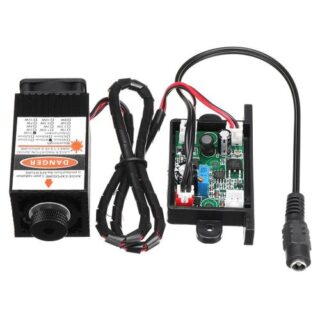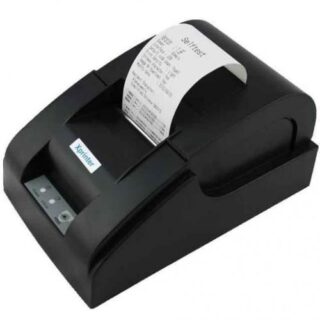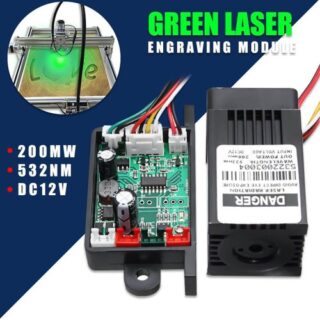Learn how to – Best Books To Learn Elasticsearch and Kibana in 2023.
As the world keeps changing, everyone will agree that one of the enablers of this rapid change has been technology. Today we are on it again. We are here to briefly discuss about some projects that are doing great things in organizations around the world and it being adopted to server various use cases because of its resilience, maturity. reliability, support and power. The projects being talked about are Elasticsearch and Kibana. Have you heard about them? I know you have. For the ones who would like a refresher, let us check out what they are all about.
Elasticsearch is a Lucene-based distributed search server that allows users to index and search unstructured content with petabytes of data. Kibana is a window into the Elastic Stack, that enables the visual exploration and real-time analysis of your data in Elasticsearch. You can also import other data into Kibana for visualization such as CSV, data from RDBMS, NoSQL among others.
1. Learning Kibana 7
As it has been mentioned, Kibana is the window through which we see what is happening inside Elasticsearch and this is a book that is wholly concerned with you getting to learn about it. It will help you understand the core concepts of the use of Kibana 7 for not only rich analytics but data visualization as well.
You will learn how to set up and configure the Elastic Stack and understand where Kibana sits within the architecture. As you advance, you will learn how to ingest data from different sources using Beats or Logstash into Elasticsearch, followed by exploring and visualizing data in Kibana.
Whether working with time series data to create complex graphs using Timelion or embedding visualizations created in Kibana into your web applications, this book surely covers it all.
By the end of your readership, you will have a solid understanding of Kibana, and be able to create your own visual analytics solutions from scratch. Is that not fun?
What you will learn
- Explore the data-driven architecture of the Elastic Stack
- Install and set up Kibana 7 and other Elastic Stack components
- Use Beats and Logstash to get input from different data sources
- Create different visualizations using Kibana
- Build enterprise-grade Elastic dashboards from scratch
- Use Timelion to play with time series data
- Install and configure APM servers and APM agents
- Work with Dev Tools, Spaces, Graph, and other important tools
The author targets aspiring Elastic developers or data analysts. It will also be useful if you want to get up to speed with the new features of Kibana 7 and perform data visualization on enterprise data. The good news to hear is that no prior knowledge of Kibana is expected. You can get the book and begin immediately. Pick it up from Amazon below.
2. Elasticsearch The Definitive Guide
This Definitive guide has been penned by two dynamic authors. One of the authors, Clinton Gormley, was the first user of Elasticsearch and wrote the Perl API back in 2010 while Zachary Tong, the other author, has been working with Elasticsearch since 2011. During that time, he has written a number of tutorials to help beginners start using Elasticsearch.
Being a practical guide, this book not only shows you how to search, analyze, and explore data with Elasticsearch, but also helps you deal with the complexities of thuman language, geolocation, and relationships.
If you are a newcomer to both search and distributed systems, you will quickly learn how to integrate Elasticsearch into your application. More experienced users will pick up lots of advanced techniques as they feast on the goodies served in the guide. A good point to note that throughout the book, you will follow a problem-based approach to learn why, when, and how to use Elasticsearch features so that you grasp them solidly.
Learnings
- Understand how Elasticsearch interprets data in your documents
- Index and query your data to take advantage of search concepts such as relevance and word proximity
- Handle human language through the effective use of analyzers and queries
- Summarize and group data to show overall trends, with aggregations and analytics
- Use geo-points and geo-shapes—Elasticsearch’s approaches to geolocation
- Model your data to take advantage of Elasticsearch’s horizontal scalability
- Learn how to configure and monitor your cluster in production
For those who prefer a practical-based approach to learning something, Clinton and Zachary have this guide to satisfy your appetite. So do not wait any loner, simply click on the link below where you will be ushered to Amazon and you will get to order this guide for delivery.
3. Learning Elastic Stack 7.0
Learning Elastic Stack is a product of two authors namely Pranav Shukla and Sharath Kumar. Let us find out who they are as far as their professional background is concerned so that we can appreciate what they have shared in this book.
Pranav Shukla is the founder and CEO of Valens DataLabs, a technologist, husband, and father of two. He is a big data architect and software craftsman who uses JVM-based languages. Sharath Kumar M N on the other hand did his master’s in computer science at the University of Texas, Dallas, USA and is currently working as a senior principal architect at Broadcom.
This book from the duo will give you a fundamental understanding of what the Elastic stack is all about, and help you use it efficiently to build powerful real-time data processing applications.
The first few sections of the book will help you understand how to set up the stack by installing tools, and exploring their basic configurations. You will then get up to speed with using Elasticsearch for distributed searching and analytics, Logstash for logging, and Kibana for data visualization.
As you work through the book, you will discover the technique of creating custom plugins using Kibana and Beats. This is followed by coverage of the Elastic X-Pack, a useful extension for effective security and monitoring. You will also find helpful tips on how to use Elastic Cloud and deploy Elastic Stack in production environments.
By the end of this book, you will be well versed with the fundamental Elastic Stack functionalities and the role of each component in the stack to solve different data processing problems.
What you will learn
- Install and configure an Elasticsearch architecture
- Solve the full-text search problem with Elasticsearch
- Discover powerful analytics capabilities through aggregations using Elasticsearch
- Build a data pipeline to transfer data from a variety of sources into Elasticsearch for analysis
- Create interactive dashboards for effective storytelling with your data using Kibana
- Learn how to secure, monitor and use Elastic Stack’s alerting and reporting capabilities
- Take applications to an on-premise or cloud-based production environment with Elastic Stack
The duo propose that this book be used for entry-level data professionals, software engineers, e-commerce developers, and full-stack developers who want to learn about Elastic Stack and how the real-time processing and search engine works for business analytics and enterprise search applications. Previous experience with Elastic Stack is not required and is the main reason anyone with an interest in this field should just jump in and get the requisite skills they are looking for. The good news is that Learning Elastic Stack is available in Amazon and getting your copy is as simple as clicking on the link below to get it delivered.
4. Kibana 7 Quick Start Guide
Before we look into the details of this resource, let us first get to find out who Srivastava, the author, is. Anurag Srivastava is a senior technical lead and has more than 12 years of experience. He is proficient in designing architecture for scalable and highly available applications.
Srivastava in this book covers the core concepts of Kibana, with chapters set out in a coherent manner so that readers can advance their learning in a step-by-step manner. The focus is on a practical approach, thereby enabling the reader to apply those examples in real time for a better understanding of the concepts and to provide them with the correct skills in relation to the tool.
With its succinct explanations, it is quite easy for a reader to use this book as a reference guide for learning basic to advanced implementations of Kibana. The practical examples, such as the creation of Kibana dashboards from CSV data, application RDBMS data, system metrics data, log file data, APM agents, and search results, can provide readers with a number of different drop-off points from where they can fetch any type of data into Kibana for the purpose of analysis or dashboarding.
What you will learn
- Explore how Logstash is configured to fetch CSV data
- Understand how to create index patterns in Kibana
- Become familiar with how to apply filters on data
- Discover how to create ML jobs
- Explore how to analyze APM data from APM agents
- Get to grips with how to save, share, inspect, and edit visualizations
- Understand how to find an anomaly in data
Srivastava write this book to fit developers who are new to Kibana and they would want to learn the fundamentals of using the tool for visualization. Apart from that Srivastava targets existing Elastic developers who would wish to visualize what Elastic is storing. Get into the details of Kibana and surprise yout colleagues with the superior visual capabilities that it has by design. Get it all learned from this book from Amazon below.
5. Advanced Elasticsearch 7.0
Peeping into the details of the author before we delve into the book, we find out that Dr. Wai Tak Wong is a faculty member in the Department of Computer Science at Kean University, NJ, USA. We also learn that he has more than 15 years professional experience in cloud software design and development. He has a PhD in computer science which he obtained at NJIT, NJ, USA.
Wai Tak Wong understands that building enterprise-grade distributed applications and executing systematic search operations call for a strong understanding of Elasticsearch and expertise in using its core APIs and latest features. That is why he wrote this book that will help you master the advanced functionalities of Elasticsearch and understand how you can develop a sophisticated, real-time search engine confidently. In addition to this, you will also learn to run machine learning jobs in Elasticsearch to speed up routine tasks.
What you will learn in brief
- Pre-process documents before indexing in ingest pipelines
- Learn how to model your data in the real world
- Get to grips with using Elasticsearch for exploratory data analysis
- Understand how to build analytics and RESTful services
- Use Kibana, Logstash, and Beats for dashboard applications
- Get up to speed with Spark and Elasticsearch for real-time analytics
- Explore the basics of Spring Data Elasticsearch, and understand how to index, search, and query in a Spring application
This book is for Elasticsearch developers and data engineers who want to take their basic knowledge of Elasticsearch to the next level and use it to build enterprise-grade distributed search applications. That being said, it is evident that prior experience of working with Elasticsearch will be useful to get the most out of this book. If that is what you are looking to achieve, we invite you to click on the link below so that you can have it all in your personal collection from Amazon.
6. Machine Learning with the Elastic Stack
Machine Learning is the buzzword that is driving data professionals crazy and business owners nuts. Everyone wants a slice of this cake and Rich and Azarmi are here to give you a satisfactory piece.
Rich Collier is a solutions architect at Elastic. Joining the Elastic team from the Prelert acquisition, Rich has over 20 years experience as a solutions architect and pre-sales systems engineer for software, hardware, and service-based solutions. His co-author Bahaaldine Azarmi, or Baha for short, is a solutions architect at Elastic. Prior to this position, Baha co-founded ReachFive, a marketing data platform focused on user behavior and social analytics.
Machine Learning with the Elastic Stack is a comprehensive overview of the embedded commercial features of anomaly detection and forecasting. The book starts with installing and setting up Elastic Stack. You will perform time series analysis on varied kinds of data, such as log files, network flows, application metrics, and financial data.
As you progress through the chapters, you will deploy machine learning within the Elastic Stack for logging, security, and metrics. In the concluding chapters, you will see how machine learning jobs can be automatically distributed and managed across the Elasticsearch cluster and made resilient to failure.
By the end of this book, you will understand the performance aspects of incorporating machine learning within the Elastic ecosystem and create anomaly detection jobs and view results from Kibana directly.
What you will learn
- Install the Elastic Stack to use machine learning features
- Understand how Elastic machine learning is used to detect a variety of anomaly types
- Apply effective anomaly detection to IT operations and security analytics
- Leverage the output of Elastic machine learning in custom views, dashboards, and proactive alerting
- Combine your created jobs to correlate anomalies of different layers of infrastructure
- Learn various tips and tricks to get the most out of Elastic machine learning
If you are a data professional eager to gain insight on Elasticsearch data without having to rely on a machine learning specialist or custom development, this is the book that will sort you out completely. You will have a wholistic view of Elasticsearch and Kibana and you will appreciate how both marry one another to give you the magic you did not expect. Click below to have your edition delivered to your personal library.
7. Elasticsearch 7.0 Cookbook
Alberto Paro, the author of this book, is an engineer, project manager, and software developer. He currently works as Big Data Practice Leader in NTTDATA in Italy on big data technologies, native cloud, and NoSQL solutions.
With this book, Alberto promises that you will be guided through comprehensive recipes on what is new in Elasticsearch 7, and see how to create and run complex queries and analytics.
Packed with recipes on performing index mapping, aggregation, and scripting using Elasticsearch, this fourth edition of Elasticsearch Cookbook will get you acquainted with numerous solutions and quick techniques for performing both every day and uncommon tasks such as deploying Elasticsearch nodes, integrating other tools to Elasticsearch, and creating different visualizations.
You will install Kibana to monitor a cluster and also extend it using a variety of plugins. Finally, you will integrate your Java, Scala, Python, and big data applications such as Apache Spark and Pig with Elasticsearch, and create efficient data applications powered by enhanced functionalities and custom plugins.
By the end of this book, you will have gained in-depth knowledge of implementing Elasticsearch architecture, and you will be able to manage, search, and store data efficiently and effectively using Elasticsearch.
What you will learn
- Creating an efficient architecture with Elasticsearch
- Optimizing search results by executing analytics aggregations
- Building complex queries by managing indices and documents
- Monitoring the performance of your cluster and nodes
- Designing advanced mapping to take full control of index steps
- Integrating Elasticsearch in Java, Scala, Python, and big data applications
- Installing Kibana to monitor clusters and extend it for plugins
If you are a software engineer, big data infrastructure engineer, or Elasticsearch developer, you will find this book absolutely useful. Moreover, data professionals working in the e-commerce and FMCG industry who use Elastic for metrics evaluation and search analytics to get deeper insights for better business decisions will have something to boast about in this resource. It should be noted that prior experience with Elasticsearch will help you get the most out of this book but a wildly curious mind will also get much from going through what the author has shared. The sky is no limit so click below to order your copy from Amazon.
8. Elasticsearch in Action
Elasticsearch in Action has been authored by Radu Gheorghe who is a search consultant and software engineer. Matthew Lee Hinman another author of this book develops highly available, cloud-based systems while Roy Russo, another mind and author is a specialist in predictive analytics. They teamed up and Elasticsearch in Action is the brain child of their hard work.
The book teaches you how to write applications that deliver professional quality search. As you read, you will learn to add basic search features to any application, enhance search results with predictive analysis and relevancy ranking, and use saved data from prior searches to give users a custom experience. This practical book focuses on Elasticsearch’s REST API via HTTP. Code snippets are written mostly in bash using cURL, so they are easily translatable to other languages.
What you will find Inside
- What is a great search application?
- Building scalable search solutions
- Using Elasticsearch with any language
- Configuration and tuning
The book has been written in such a manner that developers and administrators building and managing search-oriented applications will benefit from intimately. It is time for you to step up by upscaling and hence getting your stuff done with more professional quality and a touch of elegance. Click on the link below to get to Amazon so that you can easily order your copy home.
Conclusion
If you were wondering how fast websites or applications that serve millions of people are able to do their search and fetch data then I believe you will be introduced to some of the tools they employ to make it possible. At the same breath, Kibana’s beastly capabilities can make you achieve crazy kinds of visuals that you can use to deeply monitor, represent data as well as bring relevant insights to the fore from collected data. Elasticsearch and Kibana are tools that Data engineers, Data scientists, developers and any interested person should be looking at to succeed further in their pursuits. That is all we have for now. Hoping the article was helpful, you can find more books and guides covering different skills and spheres of knowledge below.
- Forward Kubernetes Logs to Elasticsearch (ELK) using Fluentbit
- Setup Elasticsearch Cluster on CentOS 8/7 | Ubuntu 20.04/18.04 With Ansible
- How To Install Elasticsearch 7 on Debian
- Books To Help You Master Apache Solr
- Install Apache Solr on CentOS & Fedora



















































































Leave a Reply
You must be logged in to post a comment.